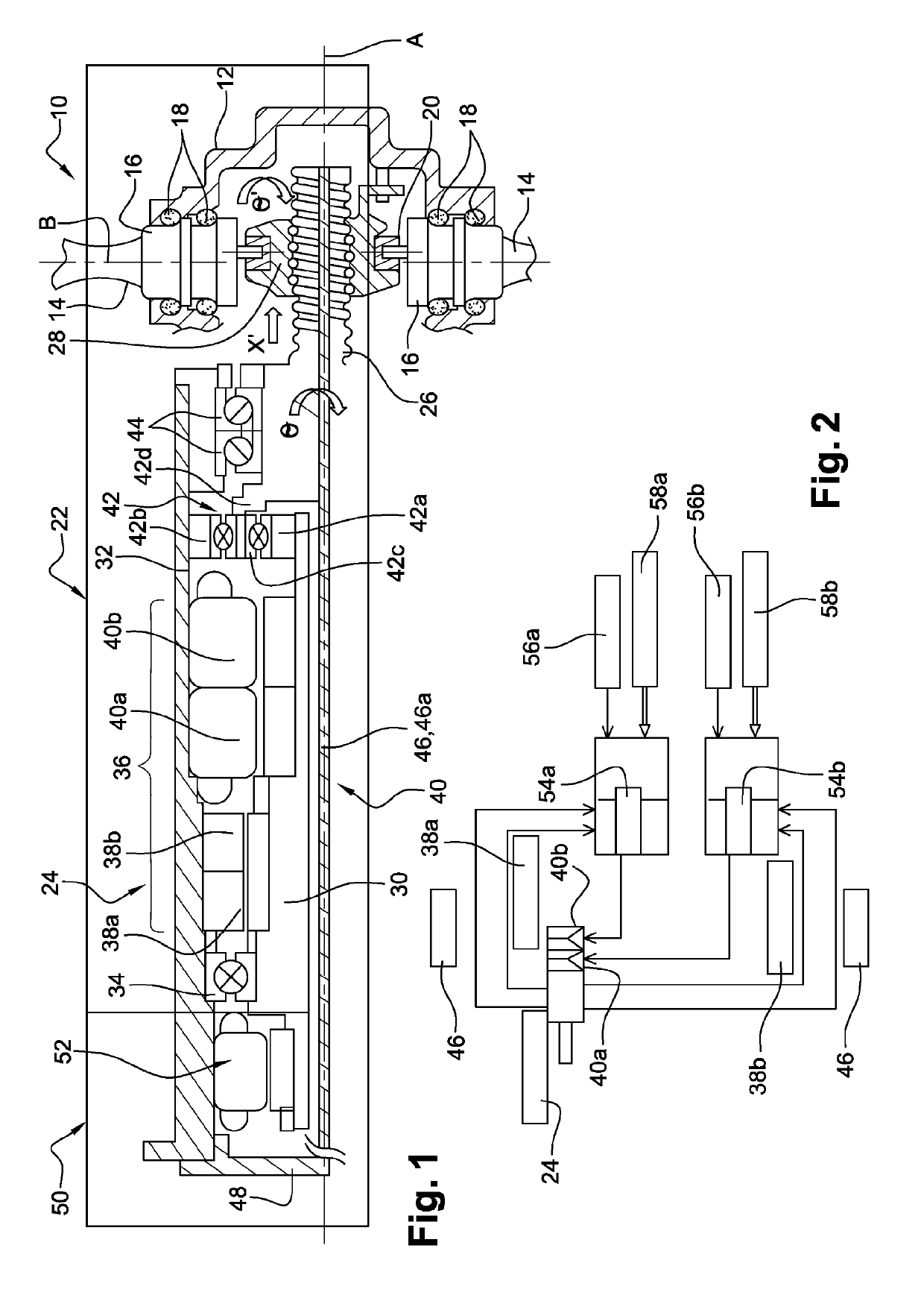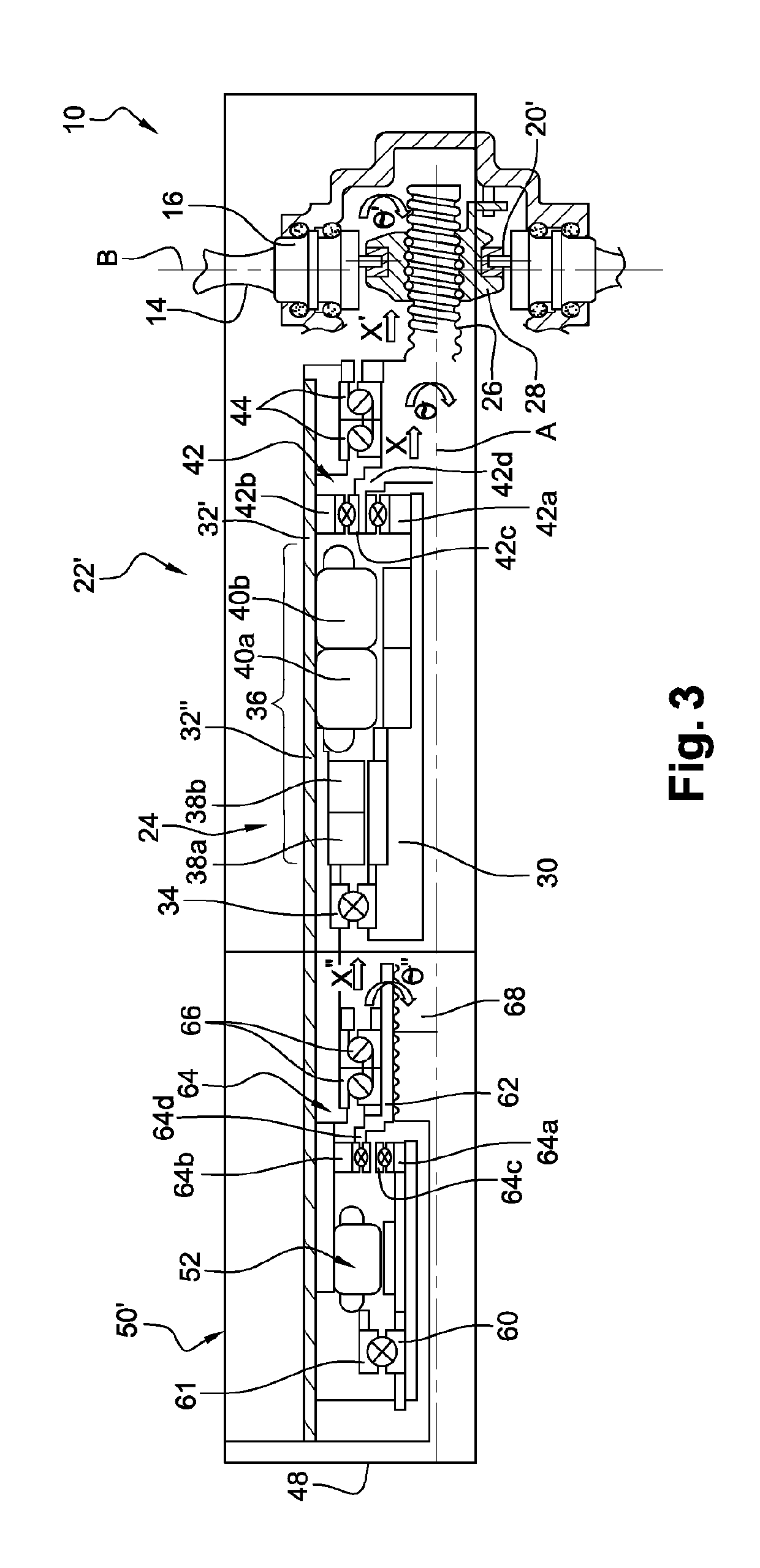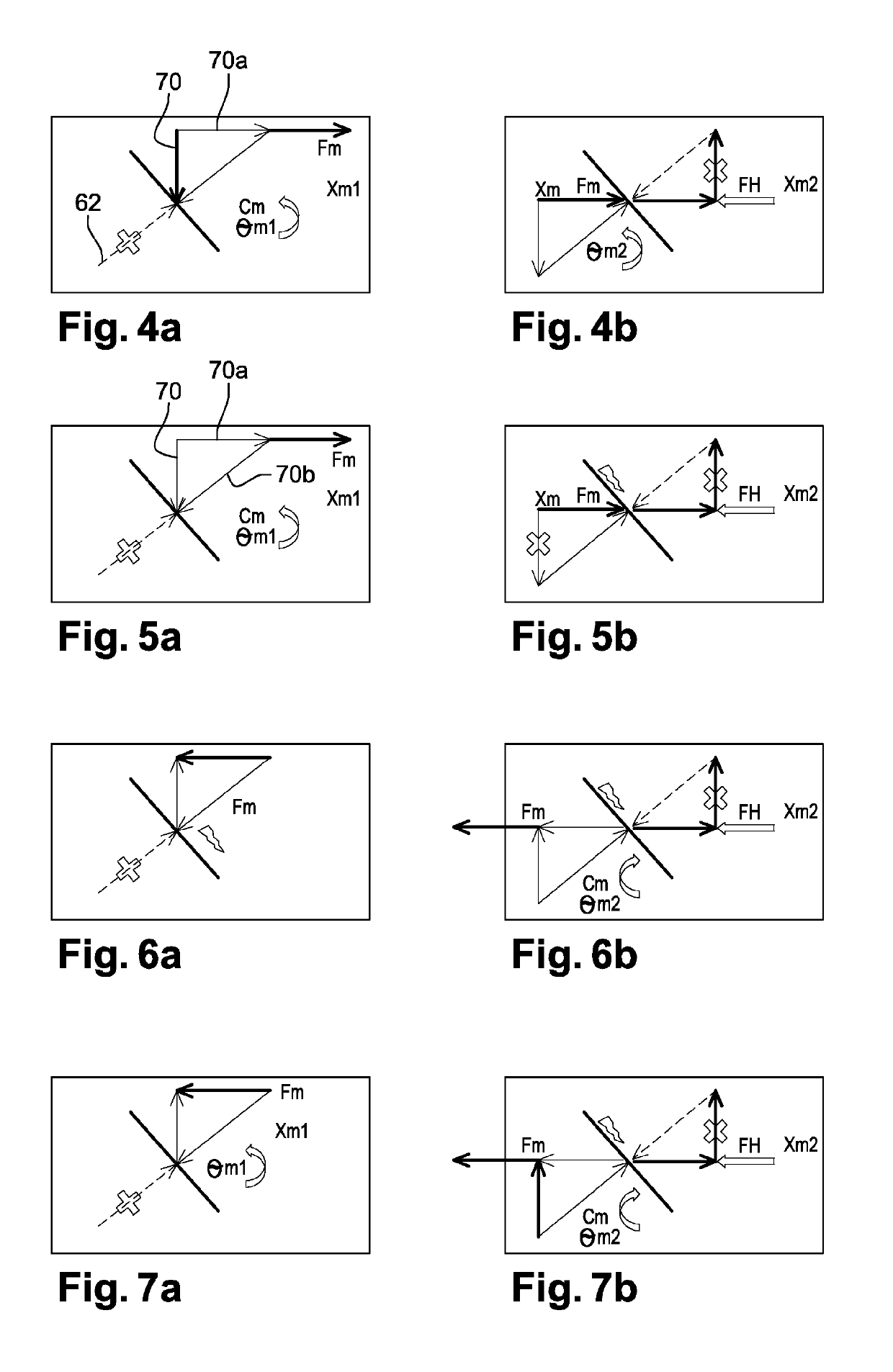Simplified pitch actuation system for a turbomachine propeller
- Summary
- Abstract
- Description
- Claims
- Application Information
AI Technical Summary
Benefits of technology
Problems solved by technology
Method used
Image
Examples
Embodiment Construction
[0049]We first refer to FIG. 1.
[0050]A propeller 10 of a turbomachine, and in particular a turboprop, is generally unsheathed and comprises a movable hub 12 (arrow θ′ of FIG. 1) with axis A of rotation, the hub carrying blades 14 which extend substantially radially relative to the axis A. Each blade 14 is connected at its radially inner end to a substantially cylindrical plate 16 for supporting and guiding the blade in rotation in order to set its rotation about an axis B, in this case substantially radial. The plate 16 of each blade 14 is mounted in a housing of the hub 12 and is centered and guided in this housing by bearings 18 extending around the axis B. The radially inner end of each blade comprises an eccentric 20. The latter is integrally connected to the plate 16 and an actuating system 22 can move it in rotation about the axis B. The displacement of the eccentrics 20 causes a rotational movement of the plates 16 and therefore the blades 14 about the axes B. Each blade 14 c...
PUM
 Login to View More
Login to View More Abstract
Description
Claims
Application Information
 Login to View More
Login to View More - R&D
- Intellectual Property
- Life Sciences
- Materials
- Tech Scout
- Unparalleled Data Quality
- Higher Quality Content
- 60% Fewer Hallucinations
Browse by: Latest US Patents, China's latest patents, Technical Efficacy Thesaurus, Application Domain, Technology Topic, Popular Technical Reports.
© 2025 PatSnap. All rights reserved.Legal|Privacy policy|Modern Slavery Act Transparency Statement|Sitemap|About US| Contact US: help@patsnap.com



